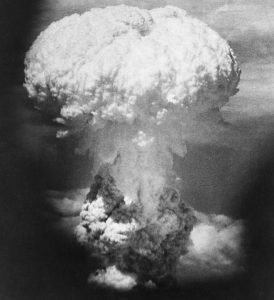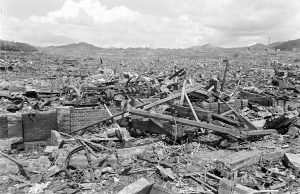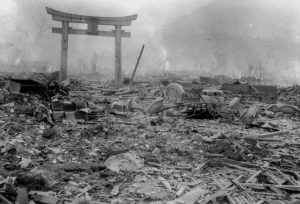
 World War II had dragged on for almost six years, when the United States took things to the next, and as it turns out, final level. For quite some time, Japan had been one of the forces to be reckoned with. Now, with so much new technology, a plan has begun to form to put an end to this war, once and for all. The Japanese had no idea what was coming…how the 6th of August, 1945 would change things forever.
World War II had dragged on for almost six years, when the United States took things to the next, and as it turns out, final level. For quite some time, Japan had been one of the forces to be reckoned with. Now, with so much new technology, a plan has begun to form to put an end to this war, once and for all. The Japanese had no idea what was coming…how the 6th of August, 1945 would change things forever.
That August 6th in 1945 dawned like any other day, but at it’s end, the world would find that everything had changed. The power to destroy whole cities in an instant was in our hands. At 8:16am, an American B-29 bomber dropped the world’s first deployed atomic bomb over the Japanese city of Hiroshima. The ensuing explosion wiped out 90 percent of the city and immediately killed 80,000 people. Tens of thousands more would later die of radiation exposure. Three days later, on August 9, 1945, a second B-29 dropped another  A-bomb on Nagasaki, killing an estimated 40,000 people. With these two events, it was very clear that the nations had the ability to bring mass destruction. Hopefully, they would also have the compassion, not to do it.
A-bomb on Nagasaki, killing an estimated 40,000 people. With these two events, it was very clear that the nations had the ability to bring mass destruction. Hopefully, they would also have the compassion, not to do it.
With such a show of power, Japan’s Emperor Hirohito announced his country’s unconditional surrender to the Japanese people in World War II in a radio address on August 14th, citing the devastating power of “a new and most cruel bomb” as the reason Japan could no longer stand against the Allies. I’m sure the war-ravaged people of Japan were almost relieved. Of course, that meant that they did not know what their future would bring, but the recent past hadn’t been so great either, so they didn’t have too much to lose really.
Japan’s War Council, urged by Emperor Hirohito, submitted a formal declaration of surrender to the Allies, on August 10, but the fighting continued between the Japanese and the Soviets in Manchuria and between the Japanese and the United States in the South Pacific. During that time, a Japanese submarine attacked the Oak Hill, an American landing ship, and the Thomas F. Nickel, an American destroyer, both east of Okinawa. On August 14, when Japanese radio announced that an Imperial Proclamation was coming soon, in which Japan would accept the terms of unconditional surrender drawn up at the Potsdam Conference. The news did not go over well. More than 1,000 Japanese soldiers stormed the Imperial Palace in an attempt to find the 
 proclamation and prevent its being transmitted to the Allies. Soldiers still loyal to Emperor Hirohito held off the attackers. That evening, General Anami, the member of the War Council most adamant against surrender, committed suicide. His reason was to atone for the Japanese army’s defeat, and he refused to hear his emperor speak the words of surrender. I guess the surrender was not a relief to everyone.
proclamation and prevent its being transmitted to the Allies. Soldiers still loyal to Emperor Hirohito held off the attackers. That evening, General Anami, the member of the War Council most adamant against surrender, committed suicide. His reason was to atone for the Japanese army’s defeat, and he refused to hear his emperor speak the words of surrender. I guess the surrender was not a relief to everyone.


Leave a Reply